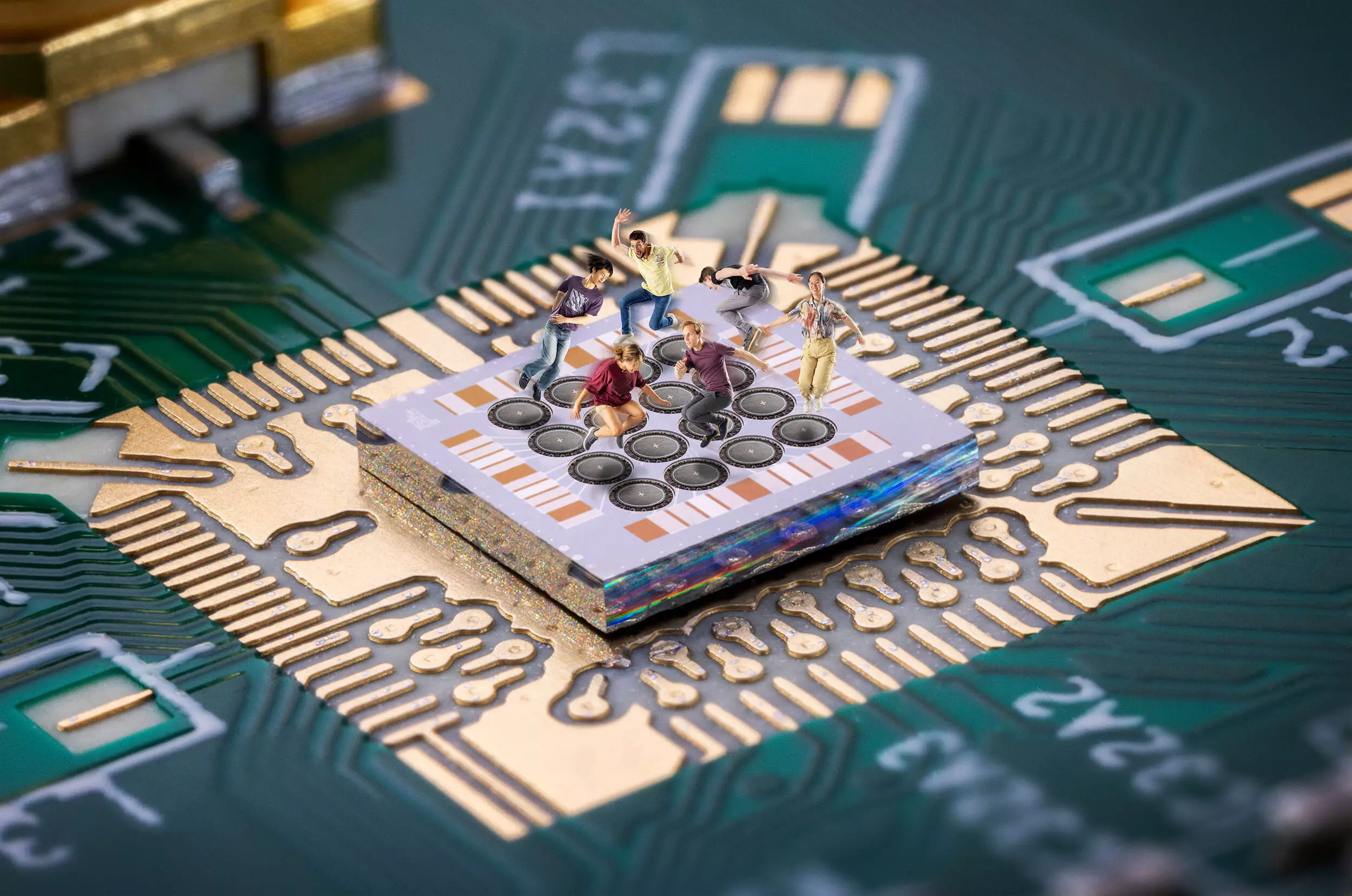In the ongoing quest to solidify quantum computing as a viable technology, researchers at QuTech have made a groundbreaking advancement with the creation of somersaulting spin qubits. This innovative approach could redefine how we understand and manipulate qubits, ultimately facilitating the control of extensive arrays of semiconductor qubits. The significance of this work is evident not only in the technical achievements but also in its potential to push the boundaries of quantum logic and computing.
Spin qubits, the cornerstone of many quantum computing architectures, rely on the manipulation of electron spins to perform calculations. QuTech’s research is paving the way for an operational leap: the ability to control these qubits efficiently without the cumbersome requirement of microwave signals traditionally used in the field. By utilizing baseband signals and subtle magnetic fields, they are simplifying the control electronics that underpin future quantum processors, which could lead to accelerated and more practical applications of quantum technologies.
A Historical Perspective: Bridging Theory and Experimentation
The concept of hopping spins within quantum dots was first theoretically proposed by Loss and DiVincenzo in 1998. However, empirical validation of this theory has remained elusive, leaving a 20-year gap between theoretical paper and experimental reality. Now, researchers at QuTech have successfully demonstrated the practicality of these ‘hopping gates,’ marking a pivotal moment of convergence between theoretical physics and laboratory execution. This milestone showcases how advances in our understanding of quantum characteristics can lead to tangible applications.
Historically, quantum dot qubits have shown promise due to their relatively simple construction and low operational temperatures, making them an attractive platform for future quantum computers. However, the experimental difficulties faced in realizing the original proposals by Loss and DiVincenzo underscore the complexities behind creating effective qubit systems. QuTech’s advancement represents a significant milestone in transforming theoretical frameworks into practical technology.
The Allure of Germanium: A New Champion in Qubit Design
Central to this breakthrough is the use of germanium as a substrate for spin rotations, a move that distinguishes QuTech’s approach from its predecessors. Researchers have leveraged germanium’s unique properties to facilitate effective spin control without the limitations imposed by traditional magnetic systems. The findings from their recent publications glow with optimism; they illustrate that not only can spins hop between quantum dots, but they can also undergo rotations essential for qubit functionality.
Imagine a trampoline park where every leap not only sends the jumper forward but also offers the opportunity to flip and spin mid-air. That analogy encapsulates the concept of somersaulting spin qubits, where jumping from one dot to another not only allows for progression through the quantum realm but introduces the possibility of inherent rotational movement. This exciting characteristic establishes a framework for enhanced qubit control, a necessity for the next generation of scalable quantum computers.
Characterizing Spin Dynamics: The Importance of Precision
The research team is aware that as the size of quantum dot arrays expands, so do the complexities of managing qubits. The initial successes they achieved with just two spins in a four-dot system serve as a robust foundation, leading them to explore more intricate networks. By allowing spins to hop across a ten-dot array, the researchers can analyze how various interactions inform qubit performance—an essential aspect of crafting high-performing quantum computers.
As co-author Francesco Borsoi highlights, the variability in how spins behave across different quantum dots directly correlates to the performance and reliability of qubit metrics. Fine-tuning the control routines to allow precise hopping to any desired dot empowers researchers to explore the vast potential of quantum architectures, thereby making significant strides toward establishing a stable and powerful quantum computing framework.
Teamwork and Vision: The Driving Forces Behind Innovation
QuTech’s advancements underscore not just technological prowess but also the importance of collaboration in scientific breakthroughs. Principal investigator Menno Veldhorst emphasizes the collective efforts of the research group, recognizing that the ability to observe qubit rotations through hopping is a tool designed for collective use. Their success illustrates that innovative research not only arises from the minds of individuals but flourishes in collaborative environments where shared goals spark transformative ideas.
As the landscape of quantum computing continues to evolve, the work done at QuTech exemplifies how fundamental research can translate into practical solutions. Their pioneering techniques in spin control and qubit manipulation mark them as leaders in this highly competitive field, offering a glimpse at how future quantum processors might operate more effectively. QuTech stands at a crucial juncture in the quantum journey, validating the age-old belief that persistence in research will eventually yield significant technological advances.

